Black Cats
For thousands of years, in countries all around the world, black cats have been considered omens of good luck; in ancient Egypt, they were believed to be divine. Why is it that black cats in the United States today still can’t shed their unlucky reputation?
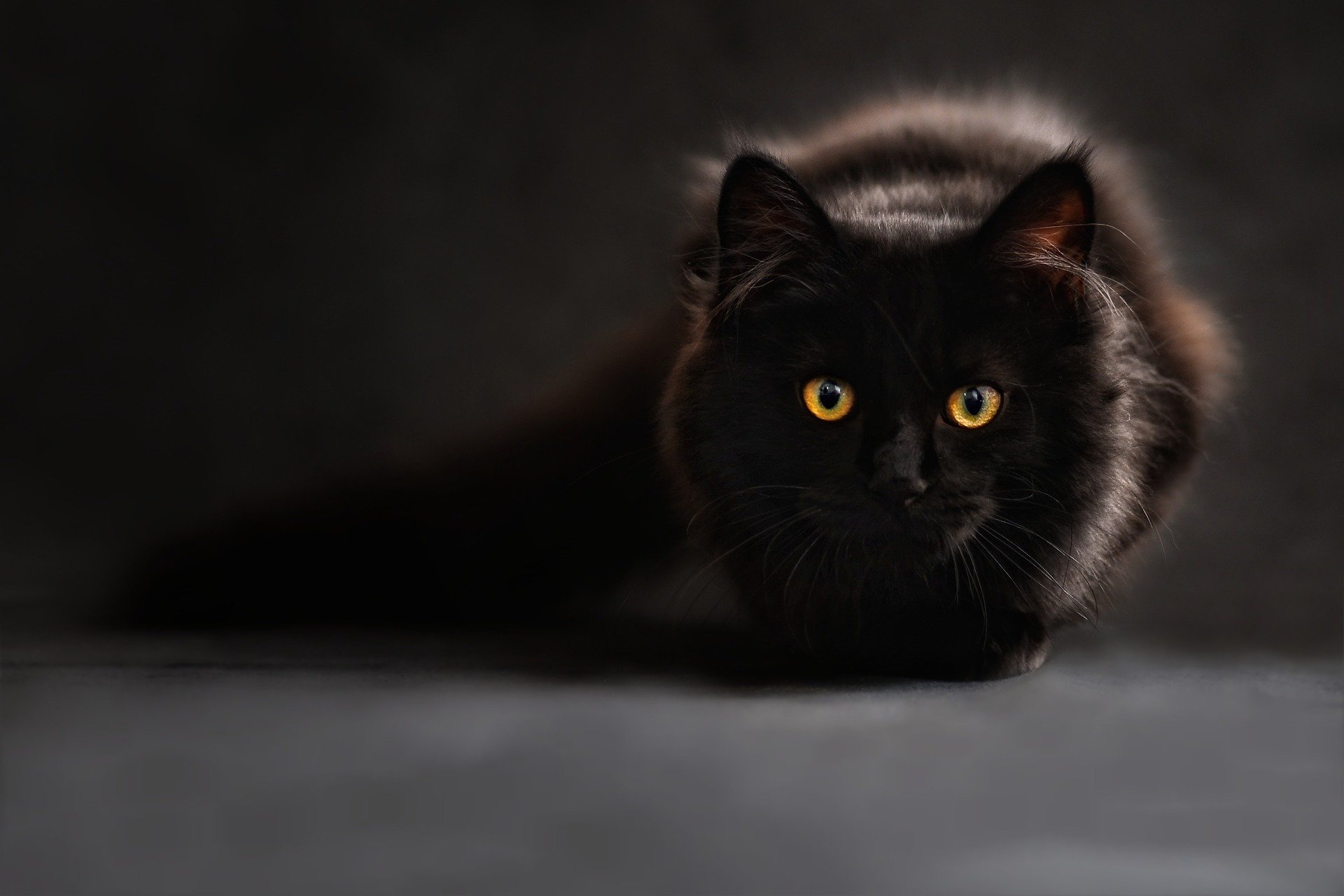
We love black cats, and Halloween is the perfect time to honor them. Our three activities are designed to help you celebrate and support these fabulous felines, and separate fact from fiction about black cats and other misunderstood “creepy” creatures.
A Cat Has Nine Shapes
 Create a 2-dimensional black cat by assembling basic shapes in inventive ways. Cat features are easily communicated with simple forms, and their bodies are built for flexibility and movement, which makes them perfect subjects for abstract art. When your child imagines how separate shapes combine to suggest a cat napping or leaping, they’re exercising visualization, experimentation, creativity, and planning skills. This particular project also bolsters early math skills, including shape recognition, the relationship between different shapes, and between simple and complex shapes.
Create a 2-dimensional black cat by assembling basic shapes in inventive ways. Cat features are easily communicated with simple forms, and their bodies are built for flexibility and movement, which makes them perfect subjects for abstract art. When your child imagines how separate shapes combine to suggest a cat napping or leaping, they’re exercising visualization, experimentation, creativity, and planning skills. This particular project also bolsters early math skills, including shape recognition, the relationship between different shapes, and between simple and complex shapes.
 Supplies
Supplies
- Paper – choose one:
- Construction paper – a sheet of black and a sheet of yellow
- Printer paper and markers
- Light colored string or yarn or a white crayon
- Glue (go with classic white glue if you are using string)
- Scissors
- Optional: Use this template of shapes to trace and cut
Preparation
Cut out a variety of circles, ovals, triangles, and rectangles in varying sizes from construction paper or printer paper. Heck, throw in a rhombus or octagon if you’re feeling frisky! You can use our template as a starting place, create your own, or freestyle.
If you are using string or yarn, cut a few pieces the same length, and maybe a few more pieces of shorter and longer lengths.
Directions
- Use the shapes to build a black cat, experimenting with size and placement as you go. Creating abstract art is all about the process, with an emphasis on open-mindedness and experimentation. Your child might also imagine creative applications for the yarn or other materials.
- Once the shapes are arranged to your child’s specifications, you may choose to glue them together, or keep the shapes separate so your curious cat can explore some of the other ideas below.
- Children can use yarn or draw with a light-colored crayon to form the eyes, nose, mouth, and whiskers, and add any other detail they’d like. A black cat wearing a Halloween mask? Why not!
- As your child creates their geometric cat shapes you can ask some targeted questions that help support their creativity and learning.
- What shapes did they use?
- What might their cat be doing in this picture?
- What did they think about while they were putting the shapes together?
For Curious Cats
 Challenge your child to make black cats in different positions.
Challenge your child to make black cats in different positions.
- What might a black cat that is sitting look like?
- How about a black cat that is laying down for a nap?
- What might a black cat playing with a toy look like?
Encouraging kids to approach the project in different ways supports cognitive flexibility and the ability to switch between thinking about two different concepts or to think about multiple concepts simultaneously.
- Using the yarn, encourage your child to give the cat different expressions.
- What would a happy cat look like? A sad cat? An angry cat? A tired cat? Simple changes to the eyes, ears, and mouth can suggest mood and personality, which is a good lesson in emotional awareness.
- Remember that cats use their ears and tails to express how they might be feeling, not just their faces. Change the shapes of your paper cat’s ears or tails to suggest different emotional states. Gesture is a fundamental principle in art which is easy to explore in abstract form. Find examples of how cats use their bodies to express themselves here.
A Special Treat for Cats
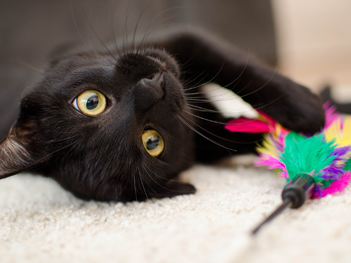 Fans of black cats (like us!) can’t believe these sleek and shiny kitties aren’t everyone’s favorite, but sadly, the stigma against black cats makes them less likely to be adopted than more brightly colored felines (that’s true of black dogs, too).
Fans of black cats (like us!) can’t believe these sleek and shiny kitties aren’t everyone’s favorite, but sadly, the stigma against black cats makes them less likely to be adopted than more brightly colored felines (that’s true of black dogs, too).
This Halloween, help support local shelter cats in your community in a direct and practical way by making small toys that can be donated to your local humane society. They’ll appreciate the treat!
Like humans, cats are wired for lifelong play. Playtime helps cats stay both mentally and physically sharp, and can defuse the stress of shelter life. For cats in your home, chase and hunting-type play can counteract destructive behaviors and helps them bond with you.
Supplies
- 1 or more child-size socks
- A piece of butcher/packing paper or part of a brown paper bag
- A small amount of dry catnip
Directions
- Fill a child’s sock from the toe to the heel with the paper as stuffing (cats enjoy the “crackle” noise it makes)
- Add a pinch of dry catnip
- Pinch the sock around the heel and ankle and stretch the ankle and cuff out.
- Tie the sock closed in a knot (Please do not use ribbon or string to tie sock closed, this is a safety hazard for the cats)
- Finished! A very easy cat toy to make, and cats will enjoy hours of playing with it. Donate finished cat toys to your local humane society, or a cat in need.
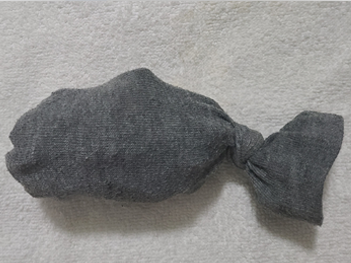 We’re working with our friends at Pasadena Humane to bring you this project! If you don’t live nearby, but want to donate these toys to a rescue organization in your area, it’s a good idea to call or check online ahead of time, to ensure they’re taking donations of this type.
We’re working with our friends at Pasadena Humane to bring you this project! If you don’t live nearby, but want to donate these toys to a rescue organization in your area, it’s a good idea to call or check online ahead of time, to ensure they’re taking donations of this type.
Service-learning projects, which apply education to direct community service, are terrific for many reasons. They foster consideration of others well-being, develop compassion and empathy skills, and teach kids to take on the perspective of others. These projects set children up to establish meaningful emotional connections to their community, and makes them feel empowered to make things better as agents of change.
More Service-Learning Opportunities
Explore these awesome local organizations that connect kids with tons of cool service-learning projects to continue engaging kids in helping and being a part of their community!
Let’s Talk Cats and Creatures
 Whether the label is unlucky, scary, or gross, negative stereotypes can be damaging for living creatures like black cats, spiders, frogs, and bats. Our beloved Kidspace Animal Ambassadors can help spark conversation with your family about the truth about “creepy” creatures, and also about how it might feel to be misunderstood.
Whether the label is unlucky, scary, or gross, negative stereotypes can be damaging for living creatures like black cats, spiders, frogs, and bats. Our beloved Kidspace Animal Ambassadors can help spark conversation with your family about the truth about “creepy” creatures, and also about how it might feel to be misunderstood.
Directions
- Go through the following pictures with your child.
- What do you notice about these animals?
- How might some of their odd/unique features help them?
- In what ways do you think this animal might be misunderstood?
After you explore some of these unique (and sometimes misunderstood) animals, you might explore some of the following questions:
- Are there times you have felt like someone doesn’t understand you?
- How did you feel when you were misunderstood by someone?
- What are some ways you can be a good friend to someone who feels misunderstood?

Spiders, and spider webs, are definitely a big part of Halloween. Did you know that not all spiders make webs? If you were to look around Kidspace or even your neighborhood, you might find lots of local spiders – some make webs, and others don’t! Jumping spiders and wolf spiders like to actively go out searching for their next meal, while crab spiders prefer the sit and wait technique.

Snakes are often represented as scarier than they really are. Have you ever had someone tell you that snakes were slimy? Snakes are not actually slimy, though their scales can feel smooth and cold. A snake’s scales are also often shiny, which might give them the appearance of being wet or slimy.

A lot of folks have the wrong idea about millipedes. Some people think they are dangerous, but millipedes are not venomous, and don’t bite or sting! In fact, when they get scared, they like to curl up into a ball or spiral-shape to help their tummies stay safe! And as we learned earlier this Halloween, they are very important decomposers!
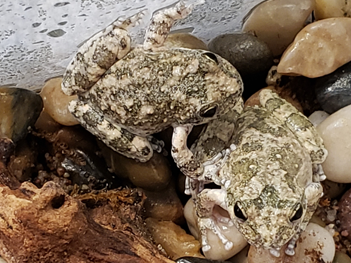
Many people think that frogs give you warts. Even though frogs sometimes have bumpy skin, there are no frogs, or other amphibians that can give you warts!
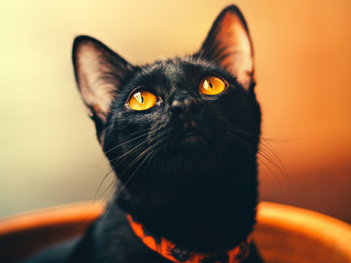 It takes lots of practice to let go of our prejudices to see past appearances. Conversations about preconceptions can introduce kids to the idea that other people or experiences might be different than their own. The ability to consider different perspectives is an important social-emotional skill that supports the development of empathy and kindness toward other living things.
It takes lots of practice to let go of our prejudices to see past appearances. Conversations about preconceptions can introduce kids to the idea that other people or experiences might be different than their own. The ability to consider different perspectives is an important social-emotional skill that supports the development of empathy and kindness toward other living things.
To view all our Halloween blogs and more, click here.
 This program is supported, in part, by the Los Angeles County Board of Supervisors through the Los Angeles County Department of Arts and Culture.
This program is supported, in part, by the Los Angeles County Board of Supervisors through the Los Angeles County Department of Arts and Culture.

